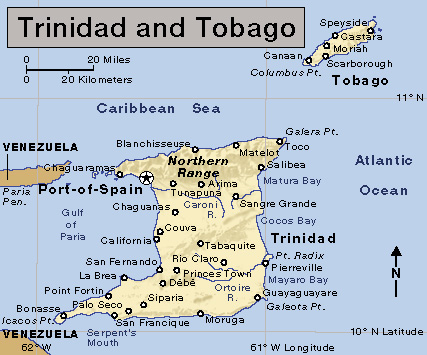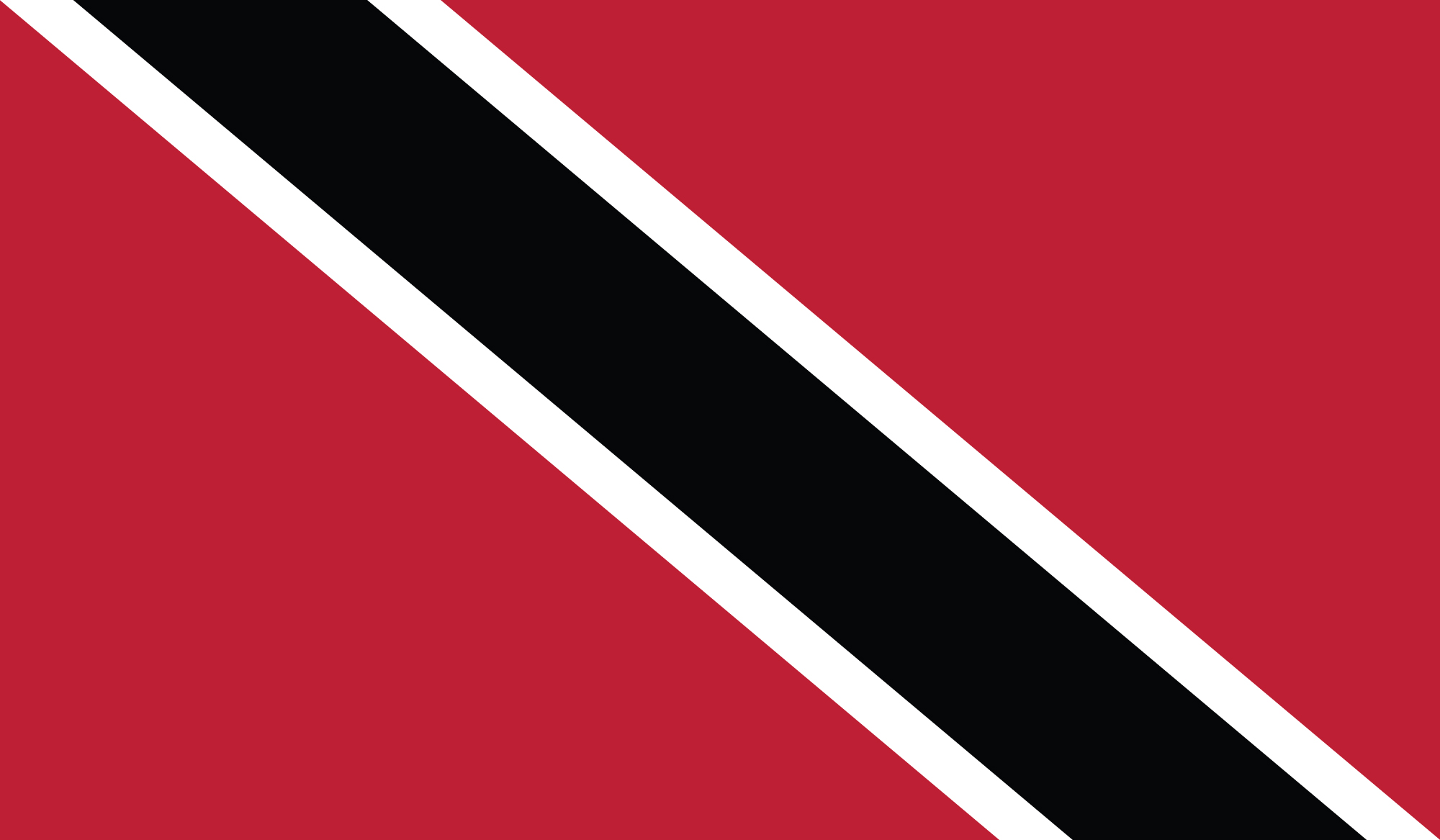Trinidad and Tobago << TRIHN ih dad and tuh BAY goh >> is a country that consists of two islands in the Caribbean Sea, near the northeast coast of South America. Trinidad, the larger island, is 7 miles (11 kilometers) east of Venezuela. Tobago is about 20 miles (32 kilometers) northeast of Trinidad.

Trinidad accounts for about 95 percent of the land area of Trinidad and Tobago, and approximately 95 percent of the country’s people live there. Port-of-Spain, on Trinidad, is the nation’s capital, largest city, and chief port.
Government.
Trinidad and Tobago is a republic. A prime minister, who is usually the leader of the majority party in Parliament, serves as the head of the government. The prime minister appoints a Cabinet of any number of members for assistance. A president, elected by the Parliament, serves as head of state. The Parliament consists of a Senate and a House of Representatives. Leading government officials appoint the senators. The people elect the members of the House of Representatives. The island of Tobago has its own House of Assembly, which is responsible for the island’s internal affairs.

People.
About 40 percent of the country’s people are descendants of people from India. About 40 percent have African ancestry. Other population groups include Chinese, Europeans, and people with both European and African ancestry.
English is the country’s official language, but French, Spanish, and Hindi are also spoken. Many people speak Trinidad English, a form of English with French and Spanish influences. Almost all the adults can read and write. The law requires all children to go to school for six years. Roman Catholics form the largest religious group, followed by Hindus and Anglicans.
Many people in the country play native musical instruments called pans, which are made from empty oil drums. Trinidad is the home of a form of folk music called calypso and of the limbo dance (see Calypso).
Loading the player...Trinidadian carnival music
Land and climate.
Tropical forests and fertile flatlands cover much of Trinidad. A mountain range extends east and west across the northern area, and hills rise in the central and southern sections. Tobago has a central mountain ridge and scenic beaches.
Trinidad and Tobago has a hot, humid climate. Temperatures range from 64 to 92 °F (18 to 33 °C). The average annual temperature is 78 °F (26 °C) on Trinidad and slightly lower on Tobago. Annual rainfall ranges from about 50 inches (127 centimeters) on southwestern Trinidad to more than 100 inches (254 centimeters) in the mountains of Tobago.
Economy
of Trinidad and Tobago is based mainly on the production of natural gas and oil and on oil refining. The manufacture of petrochemicals (chemicals made from petroleum or natural gas) is a growing industry. The country is one of the world’s leading exporters of ammonia and methanol. Oil and gas products account for most of the country’s export income. Pitch Lake, on Trinidad, is the world’s chief source of natural asphalt (a tarlike substance that is used to make paving materials).

Tourism is important to Trinidad and Tobago’s economy. Hundreds of thousands of tourists visit the country each year. Agriculture plays a small role in the country’s economy. Agricultural products include corn, milk, poultry products, and a variety of fruits and vegetables.
An international airport operates on each island. Port-of-Spain, on Trinidad, is the country’s largest port.
History.
Indigenous (native) Arawak and Carib people were living on Trinidad and Tobago when Europeans arrived. The Genoese navigator Christopher Columbus claimed Trinidad for Spain in 1498, during his third voyage to the Western Hemisphere. Spain set up a permanent settlement on Trinidad in 1592, but the population did not begin to grow rapidly until 1783. That year, Spain offered land grants on Trinidad to Roman Catholic settlers willing to develop the island’s economy. Many planters of French ancestry arrived from Haiti and other nearby islands to claim land. They set up thriving sugar cane plantations, and Trinidad prospered. The British captured Trinidad in 1797 and ruled it for more than 150 years.
In 1632, the Dutch settled on Tobago. Britain, France, and the Netherlands fought for possession of Tobago until 1814, when the British took control of it. Over the years, thousands of people had been brought from Africa and enslaved on Trinidad’s and Tobago’s plantations. Labor shortages occurred after the British abolished slavery in 1833, and many workers moved to the islands from India.
In 1889, Trinidad and Tobago became one colony under British rule. During the Great Depression of the 1930’s, the colony suffered severe economic setbacks. The people began to demand a greater voice in their government. The British allowed a gradual increase in self-government during the 1940’s and 1950’s, and the colony became an independent nation in 1962.
In the early 1970’s, Black-power supporters protested against widespread unemployment and what they considered social and economic inequality in Trinidad and Tobago. Violent demonstrations broke out, and the government twice declared a state of emergency. Racial tensions eased in the mid-1970’s, but unemployment continued to be a major problem in the country.
Also in the early 1970’s, there was a political movement on Tobago to make the island independent from the rest of the country. In 1980, as a result of this movement, the national government allowed a local House of Assembly to be established on Tobago. The House has control over local affairs.
After Trinidad and Tobago became independent in 1962, Eric Williams, founder and leader of the People’s National Movement (PNM), became the nation’s first prime minister. The PNM controlled the government until 1986, when the National Alliance for Reconstruction gained power. In 1991, the voters returned control of the government to the PNM. Following an election in 1995, Basdeo Panday, leader of the United National Congress (UNC), became the country’s first prime minister of Indian descent.
In 2001, the PNM and UNC each won the same number of seats in the House of Representatives. The president appointed PNM leader Patrick Manning as prime minister, but the UNC called for a new election. The PNM won elections in 2002 and 2007, and Manning remained prime minister.
The People’s Partnership, a coalition that included the UNC, won control of the government in 2010. Kamla Persad-Bissessar, the coalition leader, became the nation’s first woman prime minister. The PNM won House elections in 2015 and 2020. Party leader Keith Rowley became prime minister in 2015.
